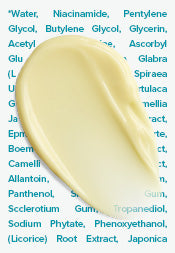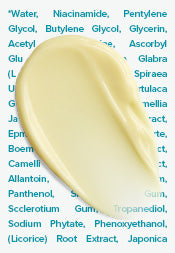Skincare Ingredient Trends for Your Beauty Routine
After a couple of rollercoaster years in the world of beauty, recent skincare trends have been taking shapes in new ways. Some of the latest trends take us back to basics with an emphasis on essentials like how to strengthen the skin’s barrier. But innovations in skincare haven’t slowed down – there are new and intriguing categories of ingredients worth checking out.
There’s a lot to take in, and some of it is overhyped. That’s why we’ve vetted the latest skincare ingredient trends against the scientific research so you can shop smartly. With this information at your fingertips, you’ll be able to get the most out of your skincare routine!
Next Generation Retinoids
Retinol has long been considered the gold standard for anti-ageing and other skin concerns. But what exactly does retinol do for your skin?
These days, we’re seeing more and more buzz about retinoid derivatives, including retinaldehyde, retinyl retinoate, and retinyl propionate. Of these, retinaldehyde stands out for its ability to work quickly and effectively. It takes one less step to convert to the bioactive form of vitamin A which is responsible for the positive effects we see on our skin. While pure retinol is well-researched, more evidence now shows that retinaldehyde shows promise as a worthy skincare hero.
Whether you’re new to retinol or experienced retinol user, check out the best retinol guide by strength tailored for you.
Fermented Skincare Ingredients
Fermented skincare ingredients have been tip-toeing their way into formulations for years, but expect them to make a bigger splash in 2024. Not all fermented ingredients have credible research to back up their benefits for our skin, but the best ones work wonders. Such ingredients can work as humectants to boost moisture content, enhance the skin’s microbiome, repair skin barrier, offer soothing properties to help skin become less reactive, and defend skin against environmental aggressors.
And here’s a pro tip: On an ingredient list, you’ll typically see ‘ferment’ in the name (for example, Lactobacillus/rye flour ferment or Bifida ferment lysate).
Upcycled Skincare Ingredients & Sustainable Skincare Efforts
What are upcycled skincare ingredients? They refer to cosmetic ingredients that are derived as a by-product from other industries – such as food, coffee brewing, or excess ingredients from the wine-making process. While this trend is still in its infancy, the future of upcycled products looks promising and bodes well for minimising waste in the beauty industry.
Other sustainable skincare efforts that are predicted to grow in 2024 include refillable products, water-conscious formulas, stronger emphasis on renewable resources, and more eco-friendly packaging. At Paula’s Choice Singapore,, we are constantly trying to boost our sustainability efforts by using honeycomb packaging in all of our customer’s orders.
Topicals that Combat Estrogen Deficiency (Menopause Skincare)
Menopause skincare earned a top spot on our 2021 skincare trends predictions. This category is expected to be even hotter in2024, given recent research supporting topicals for oestrogen deficient skin. But why all the fuss?
Oestrogen deficiency, triggered by menopause, has been proven to accelerate visible signs of ageing, including wrinkles, crepey skin and loss of skin firmness. To note, we’re excited to see phytoestrogen ingredients take centre stage, as they can help address some of these concerns in ways other anti-ageing products cannot.
Here’s another bonus: We’re seeing the conversation around menopause change, with a movement to destigmatise the negative connotations around this phase of life. Here is where skincare brands like Paula’s Choice Skincare come in to play an active role in this pursuit.
The Basics of Skin Barrier
It’s no surprise that 2024 is trending towards products focused on restoring the skin’s resiliency. Studies have shown a noticeable uptick in skin barrier issues caused by wearing protective masks over the last couple of years. In addition to that, experimental skincare hacks popularised during quarantine have also contributed to damaged skin barrier issues, leaving many with compromised skin.
Among the top ingredients to look for are tried-and-true workhorses such as omega fatty acids and ceramides which help to bolster our skin’s barrier strength, as well as innovative blends of lab-engineered peptides that support the building blocks of skin.
Need something that provides instant relief? Add in a skin-calming serum with a generous dose of soothing ingredients.
The Bodification of Skincare
Skincare in 2024is predicted to focus heavily on body care, with products that tout superstar ingredients from head to toe – including underarm care and scalp care. While we’re expecting to see some gimmicks in this arena, we applaud efforts to bring more attention to self-care which extends beyond just the face.
The truth is skincare actives perform the same way, whether you’re applying them to your face or other areas of your body. What tends to differ between body products is the base formula or delivery system. As long as a product is well-formulated, you’re good to go. One such product is Paula’s Choice Retinol Skin-Smoothing Body Treatment or SKIN RECOVERY Super Antioxidant Concentrate Serum With Retinol, perfect for sensitive skin.
The Resurgence of Superstar Ingredients
Trending ingredients of the past few years are having their moment in the spotlight all over again, thanks to TikTok-ers and skinthusiasts across social media channels. Tried-and-true superstars like niacinamide, beta hydroxy acid (BHA), hyaluronic acid, vitamin C, and retinol are as hot as ever as they’re being introduced to a new and younger generation of skincare fanatics.
Learn more skincare tips with our informative guides.
Shop for best selling, effective skincare products online on Paula’s Choice today!
References for this information
Cosmetic Dermatology: Products and Procedures, Third Edition, 2022, pages 420-423
Journal of Cosmetic Dermatology, November 2021, pages 3,586-3,592
Journal of Cosmetic Dermatology, September 2021, pages 2,874-2,879
Fermentation, May 2019, ePublication
Journal of the European Academy of Dermatology and Venereology, December 2016, pages 2,038-2,047
International Journal of Women's Dermatology, June 2015, pages 85-89
Mintel Reports, November 2021, ePublication
International Journal of Molecular Sciences, October 2021, pages 1-26
International Journal of Dermatology, July 2021, pages 799-809












